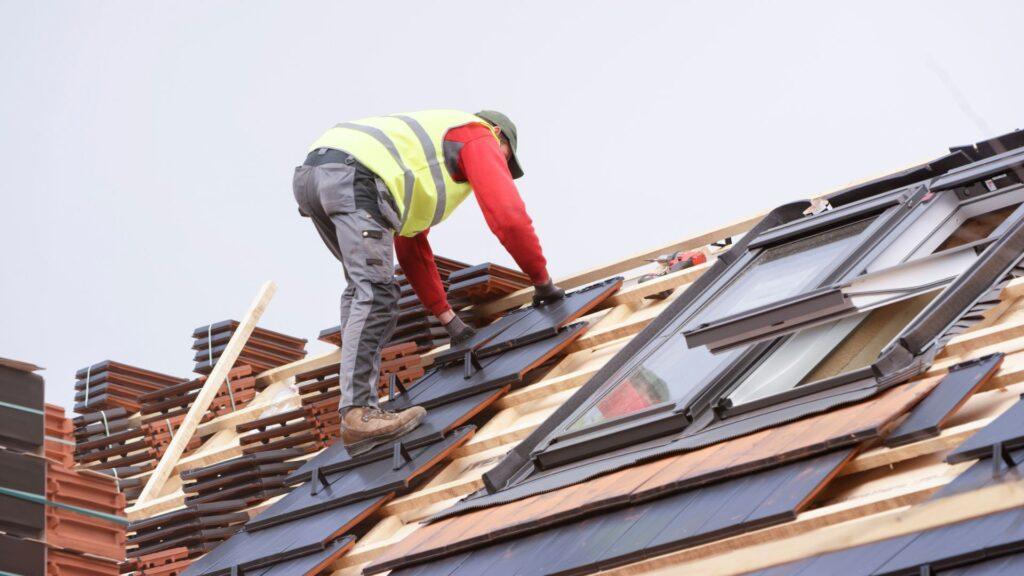Your roof is the first line of defence against the elements of your home. But how will you know when is the time for a replacement? While some roof problems can be repaired, others require a complete overhaul. Ignoring warning signs can lead to expensive damage, leaks, and even structural instability.
In this guide, we will walk through everything you need to learn about the replacement of the roof – to choose the best material from wearing and identifying the signs of tears and hiring a reliable contractor. By the end, you will be well-equipped to make an informed decision and will ensure that your home is preserved for the coming years.
Why roof replacement case
Many household owners stopped the roof replacement due to high cost and discomfort, but unavoidable delays could have serious consequences. It is important to change your roof on time:
- Prevents water damage – leaks from a deteriorating roof, mold growth, and structural damage may occur.
- Increases the value of the house – A new roof increases the curb appeal and resale value of your home.
- Increases energy efficiency – modern roofing materials provide better insulation and reduce energy bills.
- Security ensures – a chronic, damaged roof may collapse or allow pests and debris to enter your house.
- Insurance meets the requirements – some insurers may deny claims or increase the premium if your roof is very old.
Indications you need a roof replacement
Don’t believe that your roof needs to be replaced? See these telltale signals:
1. Age of your roof
Most asphalt shingle roofs are in the last 20–25 years, while metal and tile roofs can last longer. If your roof is near the end of its lifetime, consider a replacement.
2. Missing, curling, or torn ringworm
Toys that are deteriorating or completely missing, exposing your home to water damage, should be replaced immediately.
3. Leak and water stains
Water stains on the roof and walls are a clear indication that your roof is no longer keeping the moisture out.
4. Moss and mold growth
Excessive moss or mold indicates stuck moisture, which can weaken your roof over time.
5. Climb
If your roof appears to be relaxed or dropping, it may mean that there is structural damage below the surface.
6. Loss of granules from ringworm
Check your gutter for excessive granules from asphalt ringworm. A significant disadvantage is that your roof is deteriorating.
Step-by-step guide for roof replacement
Step 1: Choose the right roof material
Various roofing materials are available, each of which with opposition:
- Asphalt ringworm: cheap, easy to install, but low lifetime (20-30 years).
- Metal roof: durable, energy-efficient, but more expensive advance.
- Clay and concrete tiles: long lasting and aesthetically attractive, but heavy.
- Slate ceiling: extremely durable but expensive and a strong structure is required.
- Wooden ringworm/shake: provides a natural form but requires high maintenance.
Step 2: Get a professional inspection and estimate
Contact contractors with at least three roofing contractors for inspection and quotation. Look for:
- Proper licensing and insurance.
- Positive reviews and references.
- Detailed estimate with material and labor breakdown.
Step 3: Get the required permit
Some areas require permits for roof replacement. Your contractor should handle this process, but confirm before starting.
Step 4: Prepare your house
Before the work starts:
- Transfer external furniture and cover plants.
- Inform your neighbors about the project.
- Remove delicate objects from the walls (vibrations can cause shifting).
Step 5: Roof removal and installation
Will be the contractor:
- Remove the old ringworm and observe the underlying structure.
- Install a new underlayment for moisture conservation.
- Secure the new roof material.
- Install shining around the chimney and vents.
- Clean the debris and ensure proper ventilation.
Step 6: Final inspection and warranty review
After installation:
- Observe the work with your contractor.
- Make sure that everything is cleaned.
- Get a copy of the warranty and maintenance guidelines.
Common mistakes to avoid during roof replacement
Choosing the cheapest option: Low-cost material and labor often lead to poor quality and future repair.
Quitting a professional inspection: Unseen issues, such as structural damage, can not be addressed without an expert review.
Neglect of ventilation: Poor ventilation can create moisture and reduce the lifetime of the roof.
Not checking the warranty: Make sure your roof comes with the material and labor warranties.
Future trends in the roof: what is expected next
As technology advances, roofing materials and techniques are improving. Here are some future trends to see:
Solar roof: Integrated solar panels (eg, Tesla solar roof) provide energy savings.
Cool roofs: reflective material reduces heat absorption and reduces energy bills.
Green roofs: Roofs that grow plants improve insulation and aesthetics.
Smart Roof Monitoring: The sensors detect leaks and weak spots before they become major issues.
Conclusions: Make an informed decision
Changing your roof is an important investment, but it is one that pays for durability, safety, and household value. You can ensure a hassle-free roof replacement by identifying signs of deterioration, choosing the right material, and working with reliable professionals.
What will happen next? If you suspect your roof site, then schedule a professional inspection today. Want more home improvement tips? Subscribe to our newspaper for expert insight!




